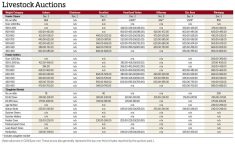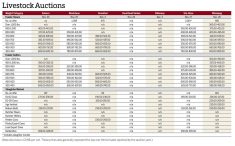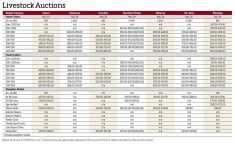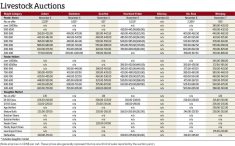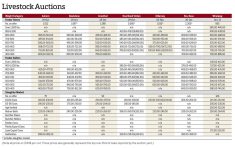The numbers moving through Manitoba’s cattle auction yards may be slowing down for the season, as attention turns to spring field work and other priorities, but prices for the cattle still finding their way to the rings continue to strengthen.
U.S. feeder cattle futures are at their highest levels of the past year, while the Canadian dollar came under some pressure during the week. That combination was supportive for the Canadian cattle markets.
Feeder cattle and live cattle futures traded in the U.S. hit their highest levels of the past year over the course of the week, but appeared to be running into resistance from a chart standpoint.
Read Also

Riding market swings can add farm profit
Regular price trends in the grain market can help farmers pinpoint how and when to sell their grain with more confidence, analyst says
The Canadian dollar settled at just over 74 U.S. cents on Friday, April 21, having lost roughly a full cent relative to its U.S. counterpart over the course of the week.
“The bottom line is that everyone in the cattle industry right now that’s selling is making very good money,” said cattle analyst Herb Lock of FarmSense Marketing in Alberta.
He said good demand for meat, coupled with a decline in carcass weights by about 25 to 30 pounds from a year ago, accounted for some of the strength. The feedlots are also very current, according to Lock, which means they don’t need to sell if they don’t need to.
“When you have both limited supply and great demand, you have to pull stuff, which takes a lot more energy from the buy side,” said Lock.
Large feed grain supplies in Western Canada, the recent beef scandal in Brazil, which saw Brazilian beef temporarily barred from a number of countries, and a move by President Donald Trump to reduce tariffs in China and Japan were also supporting the North American cattle sector, according to Lock.
While the uncertainty of Trump’s possible plans for changes to NAFTA and recent comments about Canada’s supply-managed dairy sector could be a concern in the future, Lock noted that the political noise often comes and goes, with the price telling the true story.
While the Canadian market is seeing some strength right now, the industry moves in cycles and Lock cautioned that a drop was inevitable.
“The technical guys tell us that there’s no sign of a top yet, but when things go up too fast they have a tendency to reverse just as quickly,” said Lock, adding, “seasonally, it’s any day… it’s not ‘if’ it’s ‘when.’”
While volumes are drying out for feeder cattle, the seasonal beef demand on the retail side typically picks up over the summer months, said Lock. That seasonal demand should keep the cow market somewhat supported going forward.




